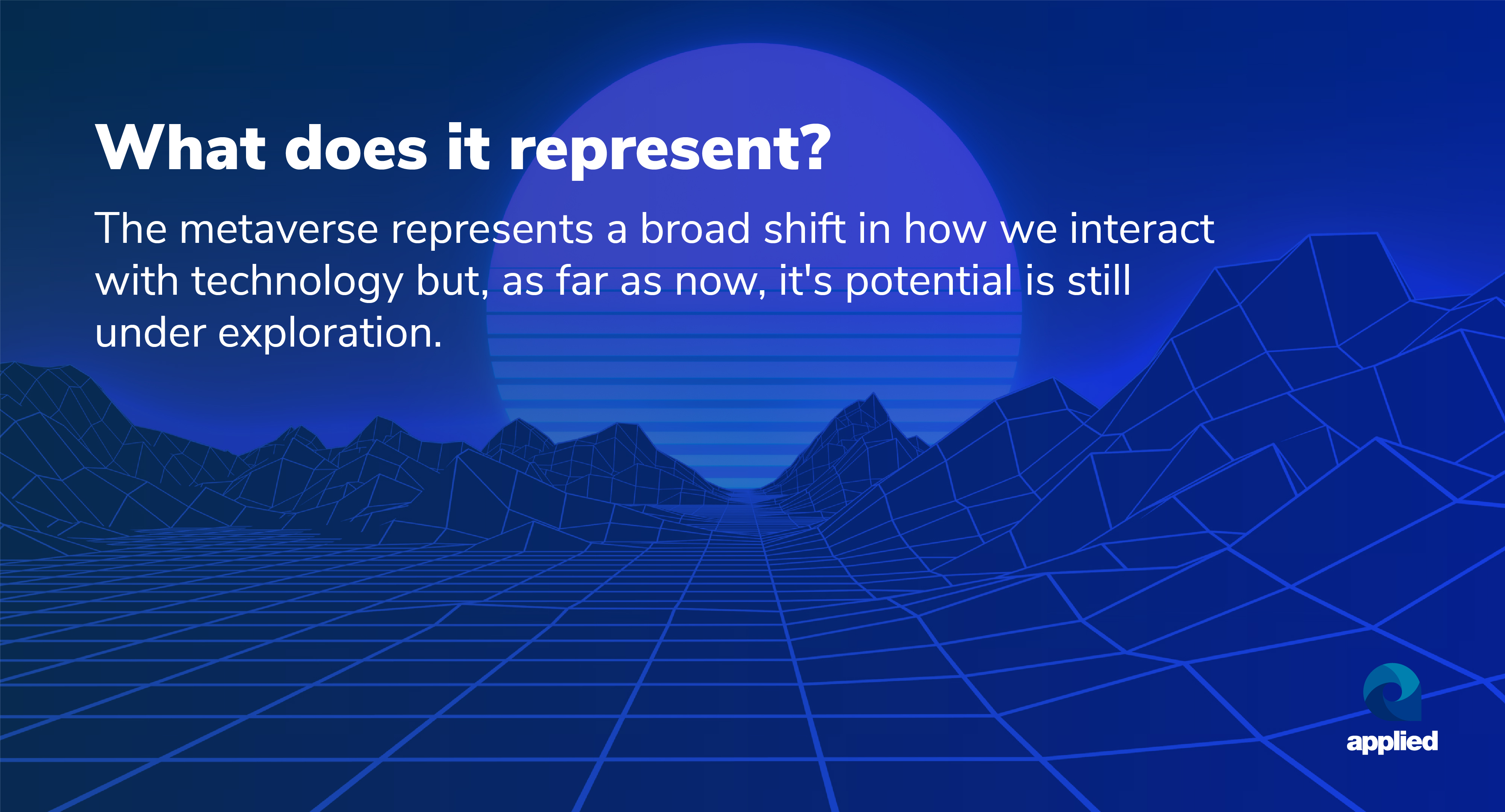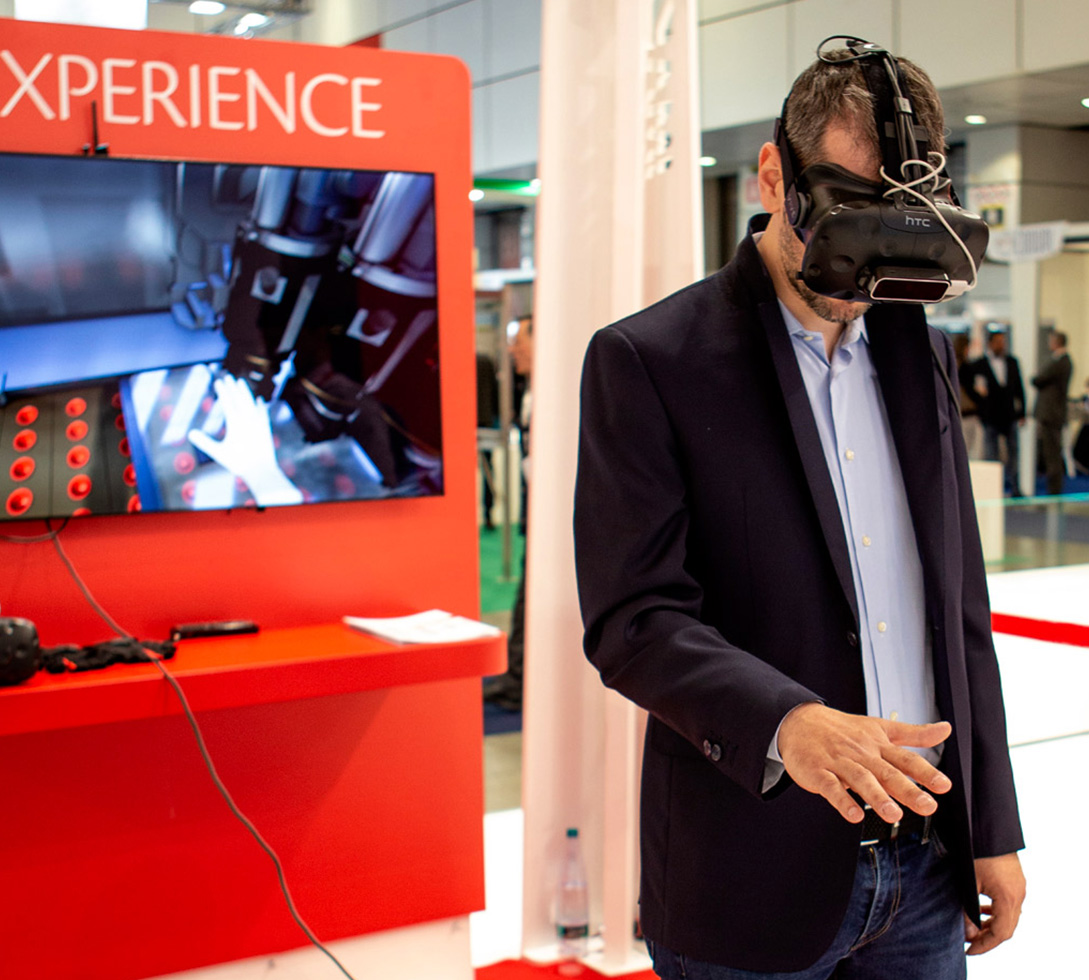Metaverse: what it is, how it works and what to expect
The metaverse is coming to life and it represents a market share that you might don’t want to lose.

Tech giants such as Meta, Roblox, Epic Games and Microsoft are leading the change and investing trillions of dollars in what they call “the next generation of the internet”, trying to understand and define this latest and extremely important tech trend.
But first of all… how can we define the metaverse right now?
The word “metaverse” was first used by the American writer Neal Stephenson in Snow Crash, a science fiction novel published in 1992 and is a portmanteau of “meta” (Greek world for “beyond”) and “universe”.
Right now defining the metaverse is not easy as everyone is still exploring all the opportunities that lie in this new realm. Many people think of the metaverse as a 3D space that will surround us, but it’s not just about the immersion within a graphical space, it’s also about the social immersion and how it sparks interactions and pushes contents.
We can say that the metaverse is a continuous, live digital universe that gives people a sense of freedom, social presence and shared spatial awareness, along with the ability to participate in a new and potentially huge virtual economy which enables creators to deliver connected, immersive experiences based around activities.
The metaverse represents a broad shift in how we interact with technology. It will not simply be a place we go into, it will be everywhere around us.
If the metaverse is the evolution of the internet, how does it differ from today’s internet?
The major difference lies in how users live experiences. While the internet allows its users to interact with something - a website, a game, a social media platform or others - the metaverse pushes forward the concept of interaction and puts the user in the middle of the action. Thanks to immersive technologies we can now live stronger and more realistic first-hand experiences based on digital human interaction. As Mark Zuckerberg said, the metaverse “Is about delivering a sense of presence like you’re right there with another person and that’s the holy grail of online and social experience.”. The development of more immersive virtual experiences is helping people to build communities based on shared values, and to express themselves in more authentic ways.
Another big difference lies in the process of how these two worlds are created. In fact, while the internet is mostly created by experts, in the metaverse both the tools to create your own activities, as well as creator economies that allow users to add content to them, will enable non-technical people to shape this realm.
The metaverse will be a collective project that will be created by people all over the world, and open to everyone.
Which technologies are mostly involved in the metaverse?
Virtual Reality and Augmented Reality but, to allow most people to jump in the metaverse, it will be accessible also via pc or smartphone.
If you want to delve into the world of Extended Reality, we suggest you to read this article.
Which markets are already delivering experiences in the metaverse?
According to a new report by Grand View Research, “The global metaverse market size was estimated at USD 38.85 billion in 2021. It is expected to expand at a compound annual growth rate (CAGR) of 39.4% from 2022 to 2030.” and will offer opportunities for both B2C and B2B companies.
Let’s see which markets are already delivering experiences in the metaverse:
- Gaming
- E-Commerce
- Social Experience
- Work tools
- Real Estate
- Travel
- Architecture & design
- Engineering
- Automotive
- Learning & Education
- Fitness
- E-sports
- Music & Entertainment
What can we expect from the metaverse in the future?
According to Tom Ffiske - Editor of the Immersive Wire newsletter and Author of the book The Metaverse: A Professional Guide - “our understanding of the future is tied to our knowledge of the present. This is not a particularly new insight but it is an important one to stress. Nowadays, science fiction novels focus on a network of knowledge because of the overwhelming influence of the internet, and our future is imagined as an extension of that network – which is why many people see the metaverse as a successor to the internet.”
Tom Ffiske’s vision of the future of the metaverse suggests that there may be one singular metaverse but he believes that smaller metaverses will complement it as well. In light of this, the future will hold two kinds of metaverses:
- Multiple micro-metaverses, where a new reality is applied to fulfil a specific role. The scope of these micro-metaverses will be minor and dedicated to focused tasks. We can already see some examples of their application in Roblox, Minecraft and Decentraland.
- A singular macro-metaverse, which will drastically restructure the digital infrastructure of our world and could be seen as a successor of sorts to the internet. Ideally in this metaverse you will be able also to interact between different platforms, for example you could buy a jacket for your avatar on Fortnite and using it also on Roblox. What is slowing down the development of this macro-metaverse is caused mainly by the technological limitations that we are facing right now and which will take a few years to overcome. Progress will, in large part, be attributed to ever-improving graphics processing units (GPUs), photorealistic 3D engines, faster content generation through volumetric video and artificial intelligence, the increasing prevalence of cloud computing and 5G, as well as more sophisticated and better-understood blockchain infrastructure.
As far as now, the only thing we know is that we jumped into the metaverse too… stay tuned, great things are coming.
See you in the metaverse!



